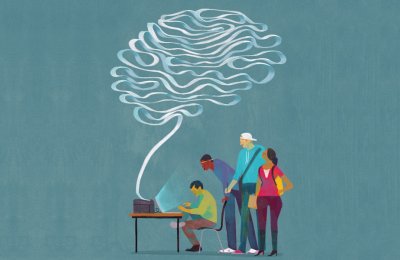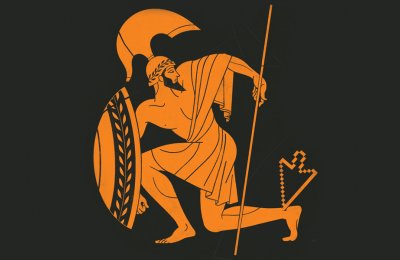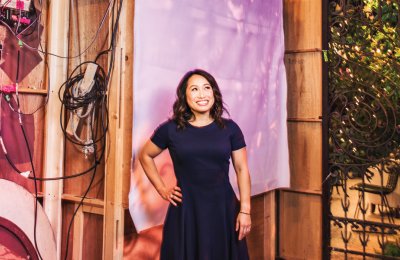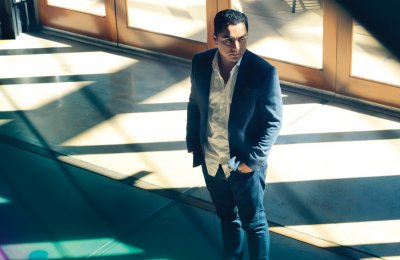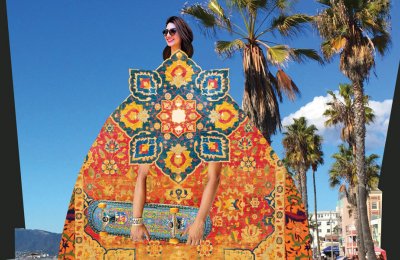USC Annenberg Magazine, Fall/Winter 2019

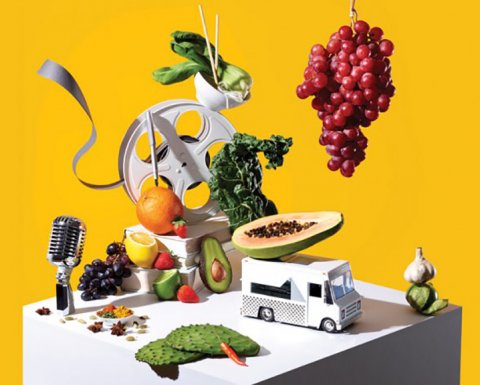 Feature story
Feature story
Thought for Food
Among the muted colors, comfortable chairs and deep quiet of the Los Angeles Central Library’s Rare Books Room, the history of L.A. restaurants stares up at Josh Kun from a sturdy wooden table.
Spread across the surface are selections from the Los Angeles Public Library’s archive of the city’s restaurant menus, including some of the very oldest, dating back to 1895.
These primary documents are the centerpiece of Kun’s To Live and Dine in L.A.: Menus and the Making of the Modern City. Kun is reliving the research that informed the 2015 book in a conversation with Nicola Twilley and Cynthia Graber, the hosts of the food podcast Gastropod. As Graber holds a microphone to catch Kun’s response, Twilley, who reviewed the book for The New Yorker when it was first released, asks Kun to explore how food is both boundary and bridge.
Food, Kun responds, allows us to draw boundaries around ourselves while also building bridges for others to understand us.
“This is my grandmother’s dish, this food comes from my past, this belongs to my community,” says Kun, director of the School of Communication and Chair in Cross-Cultural Communication. “On the other hand, food is one of the very things that allows us all to experience entry points into other ways of being, into other cultural practices. You taste somebody else’s food, and you want to know more about the person who cooked it.”
Features and Columns
Shine a Light
Leveraging communication strategies has never been more critical to advancing an open conversation about mental health in our communities.
It’s Sensitive
Preparing communicators to protect their intellectual property through rigorous digital security practices.
Planning the Perfect Schedule
Noriko Kelley breaks barriers as first woman to head planning and scheduling at a broadcast network.
Shredding Perceptions
An exploration of culture and identity through a fusion of skateboards with traditional Iranian art.
Dean’s Note: Walking the walk
by Willow Bay
Dean and Walter H. Annenberg Chair in Communication
This Fall, we were excited to welcome our new president, Dr. Carol L. Folt, along with new leadership, including Provost Charles Zukoski and USC Annenberg alumnus Glenn Osaki, who is serving as the university’s first chief communications officer. Dr. Folt is beginning to share her priorities, and it is abundantly clear that students are at the center of every decision she makes.
And she walks the walk. Literally. During home football games, Dr. Folt can be found talking with students as she prowls the student section in her cardinal-and-gold Nike sneakers, a gift from the USC Song Girls. At her inauguration, she invited students to sit directly in front of the stage and even left her seat during the ceremony to pose for photos with them. Later that day, she made her way to Hahn Plaza to join student protesters for the Climate Strike.
Dr. Folt said in her inaugural address that what she has found so striking about our students is their selflessness. “Of all the students who have talked to me about what matters to them, they want to talk about helping other people, not themselves,” she said. “It’s always about other people.”
I, too, am enormously excited by what I see in this generation. Our students know how to use their collective voices to speak up and demand change, and they continually seek out opportunities to contribute in meaningful ways. As you explore this issue’s feature stories on complex topics like food justice, mental health and digital security, you’ll find that our students are playing an important role alongside our faculty and alumni in not only developing a critical understanding of these nuanced challenges, but in devising solutions to them.
At USC Annenberg, I am proud to say that we have always been focused on encouraging our students to redefine what is possible — and deeply appreciate the president underscoring that commitment. I am also grateful to our faculty, staff, alumni, families, and industry partners whose support allows us to continue to foster this environment, where our students are empowered — and we are inspired — to take action. As Dr. Folt has urged us, “Working as Trojans together, there are no limits on the power of change that we have.”
